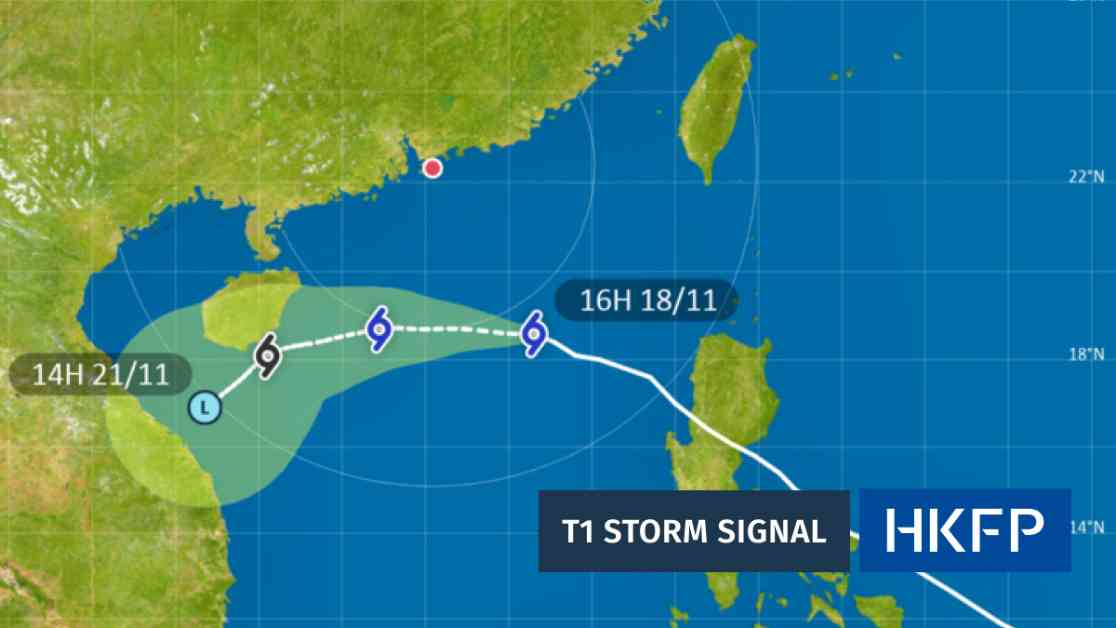Hong Kong is once again on alert as Tropical Cyclone Man-yi approaches the city, prompting the government to raise a T1 typhoon warning for the third time this month. The Hong Kong Observatory issued the Standby Signal No. 1 as the storm came within 500 kilometers of the city, with the likelihood of a higher storm signal being raised considered relatively low.
The combined effect of Tropical Cyclone Man-yi and the northeast monsoon is expected to bring strong northerly winds offshore and on high ground, although the chance of general strong winds over Hong Kong itself is relatively low. High tides are expected, potentially raising the water level in Victoria Harbour by around three meters and leading to minor flooding in low-lying coastal areas.
The rainbands associated with Man-yi are forecasted to affect the city on Tuesday, bringing showers and squalls as the storm moves closer. Cooler temperatures are also expected in the coming days before the weather improves as Man-yi departs.
This is the third typhoon to cause the Observatory to issue a storm warning in November, following Tropical Cyclone Yinxing and Tropical Cyclone Toraji. Experts have warned that the climate crisis is making typhoons more frequent and destructive, emphasizing the need for long-term adaptation planning to mitigate the impact of extreme weather events, especially for the most vulnerable populations.
The No.1 typhoon signal indicates that a tropical cyclone is centered within approximately 800 kilometers of Hong Kong and may affect the territory. Under this signal, all schools and government services remain open, and public transport continues to operate. The government advises the public to take the tropical cyclone into account when planning activities and to be cautious of potential strong winds over offshore waters.
Tropical cyclones are becoming stronger and more destructive due to warming seas, fueled by the energy from warm ocean water. With over 90% of excess heat in the atmosphere ending up in the oceans, the impact of rising greenhouse gases is preventing heat from escaping to space, contributing to the strengthening of tropical cyclones.
As we face the challenges of more frequent and intense typhoons, it is crucial for communities to be prepared and resilient in the face of extreme weather events. Stay informed, follow safety precautions, and work towards sustainable solutions to address the impacts of the climate crisis on our environment and society.



















